CALEDONIAN
Professional Cable Provider
Quick Contact

1. General Requirements
(1)The oversheath of the cables shall be an extruded layer of low smoke zero halogen (LSOH) material and comply with the requirements of IEC 60754 on corrosive and acid gas emission.
(2)AII cables shall be delivered on robust cable drums with cable ends treated to form an effective seal. When a cable is cut from a drum, the cable end and the end left on the drum shall be immediately sealed in an accepted manner to prevent the ingress of moisture.
(3)AII cables shall be of the anti-termite type.
(4)Where cables are used in conjunction with equipment liable to vibration, suitable arrangements shall be provided for flexibility.
(5)Cable glands shall be protected with corrosion-resistant LSOH outer gland shroud.
2. Conductors
(1)Conductors shall be electrical grade annealed high conductivity copper and stranded. Aluminium conductors will not be accepted. Stranded copper conductors shall comply with all the requirements of IEC 60228.
(2)Cables for fixed installations shall have conductors with stranding to Class 2 of IEC 60228 and flexible cables shall have stranded conductors to Class 5 of IEC 60228.
3. Insulation and Sheathing
(1)The constituents used in the manufacture of the materials for insulation and sheathing shall be mixed together in such quantities and processed in such manner as to ensure a stable product with the required physical and electrical characteristics, suitable for use in the specified operating conditions without deterioration.
(2)The colour of fire-retardant oversheath shall be black.
(3)Cables used in external or open areas shall withstand ultra-violet rays.
(4)Fire resistant, LSOH materials shall meet the following requirements:
a. IEC 61034 and BS EN 61034-2 - Measurement of Smoke Density of Cables burning under defined conditions
b. IEC 60331 and SS 299 - Tests for Electric Cables under fire conditions - circuit integrity.
c. Limiting Oxygen Index of at least 30, to ASTM D-2863
d. Temperature Index of 260oC, to ASTM D-2863
e. AII insulation shall be moisture and heat resistant, with temperature ratings appropriate for the application conditions and in no case lower than 900C
f. When a sample of cable is subjected to the combustion test for the determination of the amount of halogen acid gases (other than hydrofluoric acid) as set out in IEC 60754-1 and the amount of halogen acid evolved is less than 5mg/g the cable shall be regarded as zero halogen.
g. BS 6387 and SS 299 Fire and Mechanical Test Categories C, W, Z.
(5)Fire retardant, LSOH materials shall meet the requirements of items (a), (d), (e), (f) in Clause 3.(4) together with the requirements of the following:
a. IEC 60332 Tests on Electric and Optical Fibre Cables under fire conditions
b. The flame propagating criteria of US I EEE Standard 383, with a minimum test short-circuit time of five minutes. In the IEEE Standard 383 tes1.
(6)The above requirements shall be met without compromising the anti-termite (to comply with NEA regulations), mechanical and electrical properties of the cables, both during and after installation, to meet the other requirements of the specification.
4. Armour
Armouring for the cables shall comply with BS EN 10257 and the entire cable assembly shall meet the requirements of BS 5467 for XLPE insulated type and BS 6436 for PVC insulated type.
5. Power Cables
AII cables shall be rated at 600V /1000V AC
6. Signal and Control Cables
(1) Conductors
a. The conductors shall be of stranded, high conductivity annealed copper wire complying with all the requirements of IEC 60228. The minimum size of the conductors shall be 1.5 mm2 or equivalent. Detail of signal and control cable sizing, selection, calculations and supporting document shall be submitted for Engineer's acceptance.
b. Cables for fixed installations shall have conductors with stranding to Class 2 of IEC 60228, and flexible cables shall have stranded conductors to Class 5 of IEC 60228.
c. Conductors shall be smooth, uniform in quality, free from scale, spills, splits and any other defects. There shall be no joints in individual strands.
d. AII cables shall be rated at 300V / 500V grade, copper core, and twisted pair and insulated. 600V / 1000V shall be used for cables on 230V supply.
(2) Pairs
The insulated cores shall be twisted together to form pairs.
(3) Screening
a. Screening shall be achieved by the use of laminated tape, consisting of an aluminium foil bonded to a polyester film for strength, applied to the cable with an overlap so that the conductors are fully covered.
b. A drain wire or continuity conductor, laid under and in contact with the aluminium foil shall be provided and shall be in accordance with BS EN 5028, as appropriate. The tinned annealed copper conductor, which may be of solid or stranded construction, in keeping with current manufacturing techniques, shall have a minimum area of 0.5 mm2
c. The maximum resistance of the drain wire or continuity conductor provided shall meet the requirements of BS 6360.
7. Fibre Optic Cable
(1) Standard
The cable shall comply with the International Telecommunication Union ITU-T G.651.1.
(2) Construction Requirements
a. Moisture barrier shall be one side plastic coated aluminium tape (0.15mm) with flooding compound.
b. AII fibre optic cables shall be protected from inadvertent damage using Kevlar strength members, steel or aluminium jackets and shall be fire resistant.
c. The minimum bending radius of fibre optic cable under long term tensile load shall be less than or equal to ten times the overall cable diameter.
(3) Mechanical Requirements
a. The allowable pulling tension of the cable shall not be less than 300kgf.
b. Bending radius at the rated pulling tension specified above shall be approximately 20 times the outer diameter.
c. Bending radius without pulling tension shall be approximately 10 times the outer diameter.
(4) Environmental Requirements
The cable shall be capable of operating at temperatures up to 600 C.
(5) Testing
a. Test methods of the cable shall conform to the ITU-T G.653.
b. Test results and certificates shall be submitted for the Engineer's acceptance.